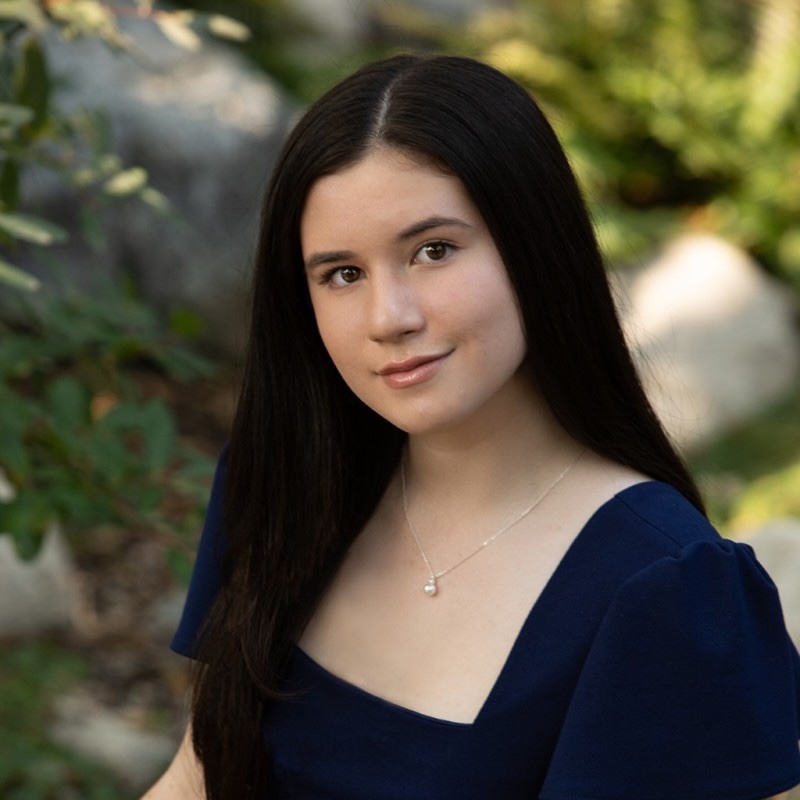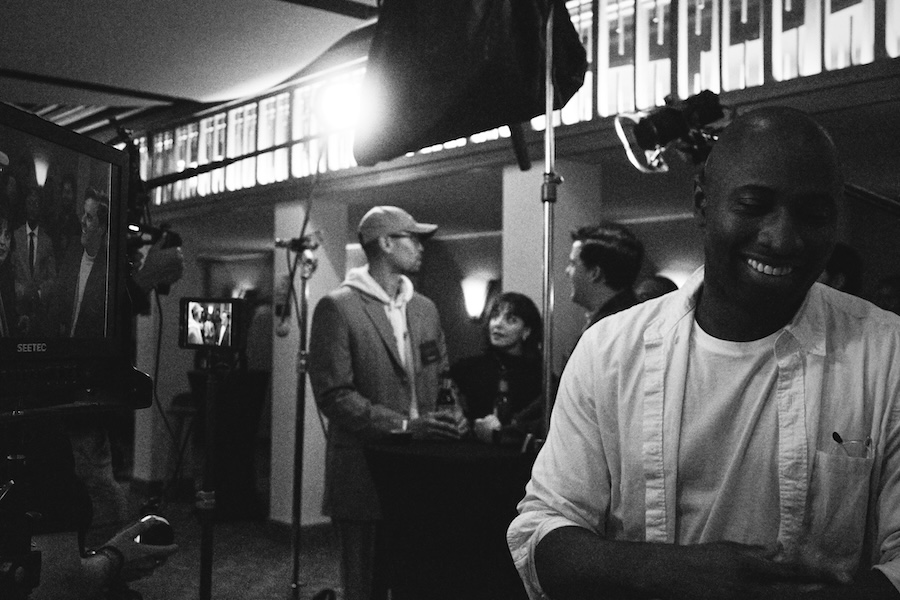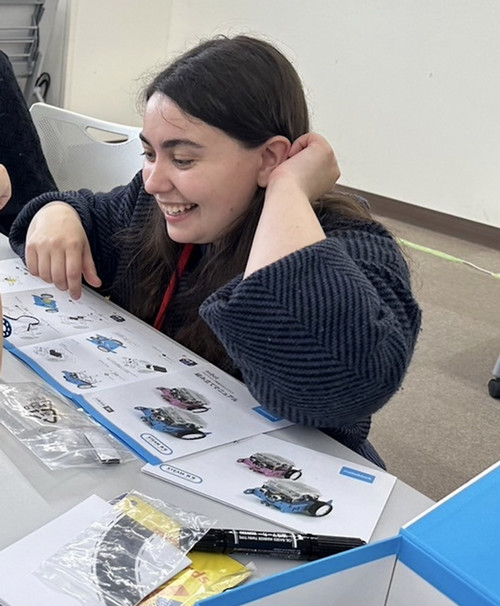Belinda Kong Karofsky Encore Lecture 2022
What We Learn from the Lives of Others:
Teaching Asian American Memoirs and Self-Writing
Since my talk today revolves around memoirs, I thought I’d start on a personal note.
I first started reading in English when I was ten, the year I entered the American school system. My family had come from Hong Kong the year before, arriving at San Francisco Airport an hour before midnight on what turned out to be Thanksgiving Day. For several months, we moved from state to state, from one end of the country to another, as my father looked for a steady job and a path to permanent residency for us. In those first months of our migrant and unsettled American life, I did not speak English, much less read in it. But when we finally did settle, somewhat precariously, in Florida, reading fiction became my anchor.
Fiction was my entry into English even as it was my escape out of daily reality—escape from the fact that we were not going back to Hong Kong, where we had left behind a tribe of some dozen aunts and uncles and fifty cousins; escape from the poverty and squalor of the Miami trailer home that we then spent the next six years in; and escape from the racial and cultural isolation that steadily grew into a habit of social self-isolation for each of us. In those years, I started reading young adult fiction with wonder, especially science fiction and fantasy, and I still remember being caught up in the world of the Dragonlance series as a twelve-year-old, losing myself in imaginary worlds where wizards and warriors played out the tragic dramas of their lives through cosmic struggles between good and evil. Those stories took me out of myself, out of the circumstances of my family’s class fall through immigration and our loneliness in America, and the need to reflect on or make sense of those conditions. Fiction allowed me to dissociate, even as it taught me to think, if not to speak, in English, to shift my interior voice from Cantonese to this country’s majoritarian language.
I carried this feeling of survival attachment to fiction throughout high school and into college, where it seemed a no-brainer for me to major in English. Like many good immigrants, especially lower-income immigrants from anglophone colonies, I was under the spell of the English literary canon. I believed that the true hallmark of a humanistic education was to be well-versed in all the great books of the West, so I dutifully took every canonical English literature course in college to ensure that I left no gaps in coverage, from Chaucer to Hemingway with a modern European lit survey thrown in for good measure—and then no further. For along the way, I had somehow also absorbed the idea that contemporary literature did not merit consideration as an object of formal study, that it was of lesser civilizational value than old books and dead authors.
So ironically, I stopped reading for joy once I started reading for institutional validation. That’s not to say that I didn’t enjoy any of the authors I studied; to this day, I retain a deep loyalty to Virginia Woolf and what she opened my eyes to about the possibilities of an English sentence. But what I learned as an implicit baseline through my college education was that literature—high literature—was not supposed to be about the personal, the contemporary, and the real. Reality itself was supposed to be a construction, a mediation. Fiction was fiction precisely because it wasn’t supposed to be about an author’s life, and to assume otherwise was to commit the most naïve of biographical fallacies, to fail in the analytical imagination. Because if you wanted to learn about something so basic as a writer’s life, well then, you’d read a biography—or a memoir. But we never did. I was never once assigned a memoir, and the closest we came was Boswell’s Life of Samuel Johnson. And so I imbibed this subtle demotion of the memoir form, picking up the unstated cue that its exclusion from the literary curriculum must be for good reason, like the exclusion of dime romances or the fantasy books I read as a teenager. Literary fiction was enshrined as the genre in need of interpretive training, the place of allegories and metaphors and deep hidden meanings that surface only for the clever and knowing elite reader.
Depending on what age you are and the educational path you’ve had, what I’m saying may sound very familiar … or very outdated. But to give a few concrete examples that might resonate across the age groups here: How many of us have read a book in a class setting and discussed the theme of madness, or alienation, or amnesia, or orphaning? (This is a rhetorical question, so no need to raise your hands.) Probably most of us. Fiction is full of literary orphans, madmen, amnesiacs, and alienated protagonists. We get so used to encountering them that they have taken on the quality of tropes.
But how many of these tropes are actually written by those who live them—as identity positions and daily realities? That is to say, how many orphan stories are written by actual adoptees, how many madness-themed novels are written by those with actual diagnosed mental health conditions, how many amnesia narratives are written by those who suffer from actual dementia or memory loss, and how many fictional works about alienation are written by those who are actual victims and targets of systemic social isolation through immigration and zoning laws?
For many years, I too read these themes as strictly metaphors and tropes. I could discuss literary orphans and literary madness, historical amnesia and existential alienation with a lot of confidence, borrowing from the confidence of literary critics before me who had also written on these themes as metaphors. I taught courses with entire units organized around these metaphors. It never occurred to me that I didn’t know the first thing about the lives and experiences of real-life adoptees, those who live with psychotic disorders, or those who live with or alongside dementia.
In his 2019 New Yorker article entitled “The Stories We Tell, and Don’t Tell, about Asian American Lives,” the scholar Hua Hsu puts it this way: “Literary analysis … often relies on generalization and abstraction, turning fictional characters into representative figures rather than treating them as specific individuals.” One of my moments of epiphany occurred two years ago, when I was teaching Viet Thanh Nguyen’s short story “I’d Love You to Want Me,” in his collection The Refugees, for my New Fictions of Asian America class. Out of the nine stories in the volume, that one stayed with me most. For a long time I wondered why. The story is focalized through the character of Mrs. Khanh, the wife of a retired professor with progressive dementia, decades after they arrive in America as boat refugees from Vietnam. Nguyen himself has written on the need for what he calls “just memory,” to fight against the “organized forgetting” of historical atrocities by those in power. At first, I was fixated on interpreting this story’s dementia plotline as a metaphor for historical amnesia or the unjust erasure of Vietnamese war memories in contemporary America, both themes that Nguyen himself as a scholar writes about. But that reading didn’t sit well with me. It was only when I stopped trying to read the professor’s dementia allegorically, when I just took it at face value, that suddenly a lightbulb turned on in my mind. I realized I was trying to collapse genres, to turn the dementia story into a metaphor of the refugee story, because I was habituated to freezing the refugee in time, so that all experiences in a refugee’s life function as allegories radiating out from the originary moment of his war trauma and displacement. I separated out and subordinated the contemporary plotline as metaphor—as if refugees are refugees only, and never aging bodies that also experience physical and mental decline like all human beings. In my own way, I was denying humanity, and lived time, to the refugee, because I was trained to read fictional figures as a set of tropes. I was performing my training, “turning fictional characters into representative figures rather than treating them as specific individuals.”
This epiphany has led me to a memoir turn in my teaching. In my recent Asian American literature classes, I’ve come to assign more and more works of self-writing as I learn to attend to written lives anew, to read stories anew. What I’ve discovered is the tremendous richness and variety in this genre, which can encompass the serial essay memoir, the memoir as poetry collection, the graphic novel memoir, the autobiographical novel, and various hybrid versions of these. The memoir form has a long lineage within Asian American literature, both predating and following Maxine Hong Kingston’s beloved (by me) 1976 The Woman Warrior. In the last few years, though, there has been a sheer explosion of self-writing on the Asian American literary scene, as more and more writers from the margins begin to bring their own stories to light.
In my Asian America’s Margins class last spring, for instance, we started with a unit on transracial adoptee memoirs. Shifting from the orphan as trope to the adoptee as self-writing author, we read Nicole Chung’s 2018 memoir All You Can Ever Know. In one passage, she observes: “In most published stories, adoptees still aren’t the adults, the ones with power or agency or desires that matter—we’re the babies in the orphanage; we’re the kids who don’t quite fit in; we are struggling souls our adoptive families fought for, objects of hope, symbols of tantalizing potential and parental magnanimity and wishes fulfilled. We are wanted, found, or saved, but never grown, never entirely our own.” When I read those lines, I realized why the orphan trope has such tenacity, such staying power, in literature and in our interpretive habits: tropes allow us to continually deprive personhood to the thing troped, so that it remains fictional, othered, the object and vehicle of our hopes and desires rather than the subject and agent of its own hopes and desires. What I’ve learned from reading these memoirs—particularly those by writers at the social margins, writers who have historically been represented by others rather than self-representing—what I continue to learn from them is self-reflection and humility: the recognition of my own received biases and privileges, and the need to keep centering the voices of those othered at the margins, who have to write and speak against the tides that turn them into tropes, drowning out their self-narratives as human beings.
I learn this lesson again and again as I read more into the genre. In her 2019 memoir The Collected Schizophrenias, Esmé Weijun Wang writes about living with schizoaffective disorder, from her first psychotic episode in college to her belated diagnosis eight years later, from her experience being involuntarily hospitalized to her search for alternative methods of therapy and self-care beyond conventional psychiatry and medicine. “Schizophrenia terrifies,” she writes in her opening line. “People speak of schizophrenics as though they were dead without being dead, gone in the eyes of those around them … other human catastrophes can bear the weight of human narrative—war, kidnapping, death—but schizophrenia’s built-in chaos resists sense. [Even the words we use to name the condition] address the suffering of those who are adjacent to the one who is suffering in the first place. Because the schizophrenic does suffer.” Literary fiction as much as popular culture might raise the specter of the madman or madwoman to thematize social otherness, the quasi-human we feel at once pity and fear toward, but rarely do we turn to the self-writing of those diagnosed with serious mental illnesses to understand their interior worlds, their ways of narrating their own suffering, and in the process align ourselves with their humanity. Rarer still are the stories of mental illness told by people of color, by women of color, or by Asian American women, who are often stereotyped in our country as model minority success stories.
Recently, I’ve started to tell my students more about my own educational path, how I never formally studied Asian American literature in school—not in high school, not in college, not even in graduate school, largely because it was simply not taught. And recently, I’ve started reflecting on the teachers I’ve had in my life, how I never had an Asian teacher until college, and how I never had an Asian female teacher until graduate school. I’m not unique in this lack: according to the most recent data from the US Department of Education, Asian teachers account for 2% of all public school teachers in America today, and Asian women comprise 5% of all professors.[1] If Asian Americans are supposed to be so high-achieving, where were all the role models in my years of schooling? Generations of students have grown up like me, searching in the dark for a sense of our place in this country, in its cultural landscape and literary imagination, and coming up largely empty except for a handful of recycled stereotypes. Not only has our place been erased from the educational system, but the erasure is so complete that there’s an erasure of the erasure itself—so that we ourselves don’t realize we’ve gone missing, just as I didn’t realize I never had a teacher who looked like me until I was in my mid-twenties. I didn’t even know to want one. Over my 17 years at Bowdoin, I’ve heard so many students tell me likewise. So, I hope that the next time someone says representation matters, you won’t brush them off—because representation does still matter: in school curricula, in the books we teach, in the voices we center.
Last year, amid the surge in anti-Asian hate and violence during Covid, Illinois became the first state to require the teaching of Asian American history in public schools. My first thought was: I can’t believe it’s taken this long. My second thought was: it’s never too late. I believe in education and in change, and both are fundamentally driven by hope and optimism. So I strive to keep making space for Asian American voices and self-writing in my classroom and in Bowdoin’s curriculum, so that current and future generations of students have the option of coming to these writers. I am ever so grateful to those of you who do come, who keep me grounded and listening.
Finally, to our Sarah and James Bowdoin scholars today: congratulations. Your achievements are to be celebrated and applauded. Achievement matters—especially if you don’t come from socioeconomic privilege and worry about a secure future, for yourself and your family. But remember also that achievements are not all that matters. If teaching during Covid has taught me anything, it’s that you are all enough whether you achieve or not. Remember that you are whole people, that you are never merely your accomplishments. Honor yourselves beyond the awards and accolades, don’t let performance become the enemy of wellbeing, and always be kind and caring to yourselves. Seek out the things that will bring you longterm joy and wellness, and embrace them as a lifelong living practice. That is my hope and wish for all of you.
[1] https://www.pewresearch.org/fact-tank/2021/12/10/americas-public-school-teachers-are-far-less-racially-and-ethnically-diverse-than-their-students/; https://nces.ed.gov/fastfacts/display.asp?id=61



